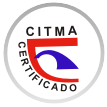Development of preservative-free artificial tears, ophthalmic solution
Abstract
Translator
Hypromellose, in ophthalmic solution, has the purpose of increasing the humidity of the ocular surface, lubricating the blinking movement and reducing the symptoms of the patient affected by dry eyes syndrome. The National Health System does not have a formulation of artificial tears, without a preservative, in single-dose bottles, for the treatment of this pathology. The objective of this work was to develop a preservative-free artificial tear formulation of pharmaceutical quality. A formulation similar in composition to human tears was developed. Once the controls of the three pilot batches prepared were approved, they were formed, dosed and sealed in the Bottelpack TYP 321 machine, in transparent vials of 0.5 mL capacity. The operating parameters were verified and the quality control of the batches was carried out. The parameters evaluated during scaling demonstrated that each of the technological processes involved in obtaining the ophthalmic solution, such as speed and time of agitation, dissolution, pH and filtration, met the established requirements. The sterility of the product was guaranteed by sterilizing filtration, carried out during the filling process of the ophthalmic solution, demonstrating the integrity of each of the membranes used, in each type of filter used in the production process. The evaluation of the physical, chemical and microbiological parameters demonstrated the quality of the newly prepared batches. The reproducibility of the manufacturing process of preservative-free artificial tears is demonstrated, in single-dose vials, according to the existing conditions at the UEB Julio Trigo López Laboratory.
References
2. FARRAND, K.F.; FRIDMAN, M.; STILLMAN, I.O.; SCHAUMBERG, D.A. Prevalence of diagnosed dry eye disease in the United States among adults aged 18 years and older. Am J Ophthalmol. 2017, 182, p. 90-98. DOI: 10.1016/j.ajo.2017.06.033
3. WAN, Y.; ZHANG, M.; LI, X. The global prevalence of dry eye disease and its association with economy: a systematic review. Preprint from Research Square. 2019. https://doi.org/10.21203/rs.2.10986/v1
4. WENG, J.; FINK, M.K.; SHARMA, A. A critical appraisal of the physicochemical properties and biological effects of artificial tear ingredients and formulations. Int. J. Mol. Sci. 2023, 24(3), 2758. https://doi.org/10.3390/ijms24032758
5. AARTHI, S.; AKASH, M.; UMADEVI, S. Formulation of artificial tears nano emulsion and assessment of stability. Eur. Chem. Bull. 2023, 12(8), p. 4501-4513. https://www.researchgate.net/publication/379484437
6. KUMAR, P.; SINGH, P. Formulation and evaluation of eye drop for dry eye syndrome. Int. J. Pharma. Res. Health Sci. 2018, 6(2), p. 2410-12. DOI:10.21276/ijprhs.2018.2018.02.12
7. ABUSHARHA, A.; PEARCE, I.E.; AFSAR, T.; RAZAK, S. Evaluation of therapeutic capability of emustil drops against tear film complications under dry environmental conditions in healthy individuals. Medicina. 2023, 59, 1298. https://doi.org/10.3390/medicina59071298
8. CHE ARIF, F.A.; HILMI, M.R.; MOHD KAMAL, K.; ITHNIN, M.H. Evaluation of 18 artificial tears based on viscosity and pH. Malaysian Journal of Ophthalmology. 2020, 2, p. 96-111. DOI: 10.35119/myjo.v2i2.109
9. CHE ARIF, F.A.; HILMI, M.R.; MOHD KAMAL, K.; ITHNIN, M.H. Comparison of immediate effects on usage of dual polymer artificial tears on changes in tear film characteristics. Malaysian Journal of of Medicine and Health Sciences. 2021, 17(3), p. 252-258. (eISSN 2636-9346)
10. RIBEIRO, M.V.M.R.; BARBOSA, F.T.; RIBEIRO, L.E.F.; DE SOUSA-RODRIGUES, C.F.; NOGUEIRA RIBEIRO, E.A. Effectiveness of using preservative-free artificial tears versus preserved lubricants for the treatment of dry eyes: a systematic review. Arq Bras Oftalmol. 2019, 82(5), p. 436-45. http://dx.doi.org/10.5935/0004-2749.20190097
11. SEMP, D.A.; BEESON, D.; SHEPPARD, A.L.; DUTTA, D.; WOLFFSOHN, J.S. Artificial tears: A systematic review. Clinical Optometry. 2023, 15, p. 9-27. https: //doi.org/10.2147/OPTO.S350185
12. WALSH, K.; JONES, L. The use of preservatives in dry eye drops. Clin Ophthalmol. 2019, 13, p.1409–1425. DOI:10.2147/opth.S21161
13. ARAGONA, P.; SIMMONS, P.A.; WANG, H., WANG, T. Physicochemical properties of hyaluronic acid-based lubricant eye drops. Transl Vis Sci Technol. 2019, 8(6), p. 2. DOI:10.1167/tvst.8.6.2
14. SAVIĆ, V.; ŽIVKOVIĆ, J.; STANKOVIĆ, M.; ANTUNOVIĆ, M.; BASIĆ, Z.; NIKOLIĆ, I. The influence of excipients on stability of viscous eye drops with dexpanthenol in pharmaceutical practice. Acta Poloniae Pharmaceutica - Drug Research. 2019, 76(5), p. 845-853. DOI: 10.32383/appdr/109202
15. AGARWAL, P.; CRAIG, J.P.; RUPENTHAL, I.D. Formulation considerations for the management of dry eye disease. Pharmaceutics. 2021, 13(2), 207. DOI:10.3390/pharmaceutics13020207
16. Centro para el Control Estatal de la Calidad de los Medicamentos (CECMED). Anexo No. 04 Buenas Prácticas de Fabricación de Productos Estériles. Regulación No. 16-2012: Directrices de Buenas Prácticas de Fabricación de Productos Farmacéuticos. Ministerio de Salud Pública: La Habana, Cuba. 2012, p. 108-138.
17. PEÑA ROCHE, Y.l. Desarrollo de las lágrimas artificiales, solución oftálmica, sin preservo. Tesis presentada en opción al título de Máster en Tecnología y Control de Medicamentos. Instituto de Farmacia y Alimentos, Universidad de La Habana, Cuba, 2024.
18. INSTRUCCIÓN DE TRABAJO (INS): INS-PP8-001: Operaciones preliminares para la formulación de productos. UEB Julio Trigo. Cuba. 2021.
19. PROCEDIMIENTO NORMALIZADO de OPERACIÓN (PNO): PNO-PP5-013: Prueba de integridad a las membranas filtrantes mediante el equipo Sartocheck 4 Plus. UEB Julio Trigo. Cuba. 2021.
20. United States Pharmacopeia 40 Ed. (USP 40). United States Pharmacopoeia. US Pharmacopoeia Convention, Inc. Washington DC. 2017, p. 155, 715, 719, 871, 872, 2722, 5013-5016. https://www.uspnf.com/official-text/proposal-statuscommentary/usp-40-nf-35
21. PROCEDIMIENTO NORMALIZADO de OPERACIÓN (PNO): PNO-FQ6-014: Ensayo de viscosidad. UEB Julio Trigo. Cuba, 2022.
This work is licensed under the Creative Commons Attribution-NonCommercial.
![]()













 Universidad de Oriente
Universidad de Oriente 